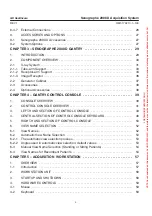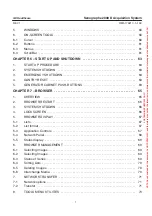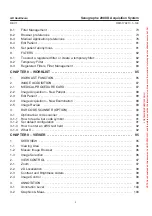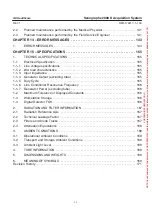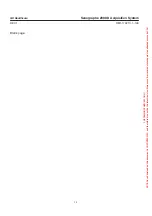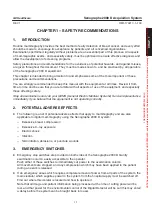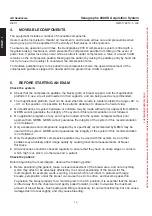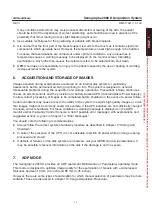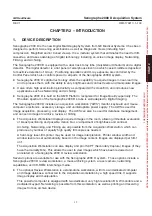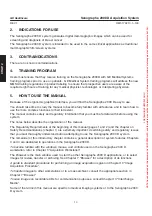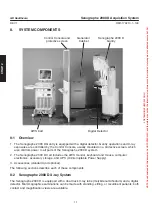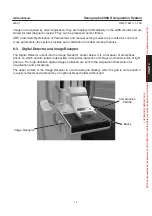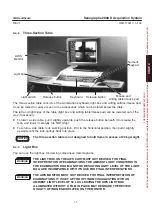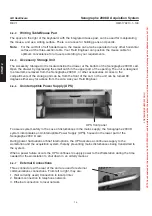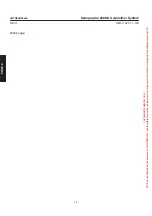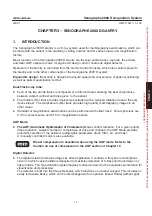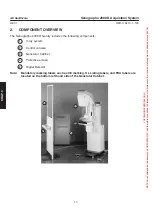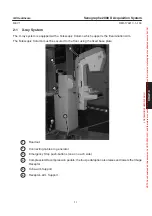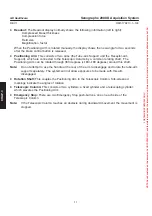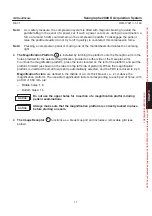
CHAP
. 2
GE Healthcare
Senographe 2000 D Acquisition System
REV 1
OM 5179217–1–100
20
2.
INDICATIONS FOR USE
The Senographe 2000 D system generates digital mammographic images which can be used for
screening and diagnosis of breast cancer.
The Senographe 2000 D system is intended to be used in the same clinical applications as traditional
mammographic film/screen systems.
3.
CONTRAINDICATIONS
There are no known contraindications.
4.
TRAINING PROGRAM
Users must ensure that they receive training on the Senographe 2000D with GE Medical Systems
training programs prior to use on patients. GE Medical System training programs will address the new
MQSA training regulations in product labeling to ensure that prospective users are aware of the
required eight hours of training for any medical physicist, technologist, or interpreting physician.
5.
HOW TO USE THE MANUAL
Because of the ergonomic graphical interface, you will find the Senographe 2000 D easy to use.
You should take time to study the manual to become fully familiar with all features, and to learn how to
use the more complex functions to their full extent.
The manual contains safety and regulatory information that you must be familiar with before using the
system.
The notes below describe the organization of the manual.
The Regulatory Requirements at the beginning of this manual (pages 1 and 2) and the chapter on
Safety Recommendations (chapter 1) are extremely important, describing safety and regulatory issues
that you
must
thoroughly understand
before
attempting to use the Senographe 2000 D system.
The remainder of this introductory chapter contains a general description of system features. Chapters
3 and 4 are dedicated to operations in the Senographe 2000 D.
To become familiar with the windows, menus, and controls
used on the Senographe 2000 D
workstation, refer to Chapter 5 “Acquisition Workstation”.
The
Browser
is the main window used to start the other Senographe 2000 D applications, or to select
images for review, transfer or archiving. See Chapter 7 “Browser” for a description of its functions.
A guide to standard procedures for performing an image acquisition
is given in Chapter 10 “Image
Acquisition Procedure”.
To transfer images
to other workstations or to a mass archiver, consult the appropriate section in
Chapter 7 “Browser”.
To
save images
on recordable CDs for communication purposes, consult Chapter 13 “Interchange
Media”.
Some of the
terms
in this manual are specific to medical imaging systems or to the Senographe 2000
D system.
FOR
TRAINING
PURPOSES
ONLY!
NOTE:
Once
downloaded,
this
document
is
UNCONTROLLED,
and
therefore
may
not
be
the
latest
revision.
Always
confirm
revision
status
against
a
validated
source
(ie
CDL).

